Every watchmaker interested in precision has to deal with the same 4 main issues. If these 4 issues were solved, it can be said that one would obtain the perfect watch. But like the Perpetual Movement or the Fountain of Youth, this quest for the Holy Grail is not achievable in our lifetime. But it does not mean that we should not attempt to get closer to it.
And that is FP’s obsession, and what makes him go back to his workbench day in and day out.
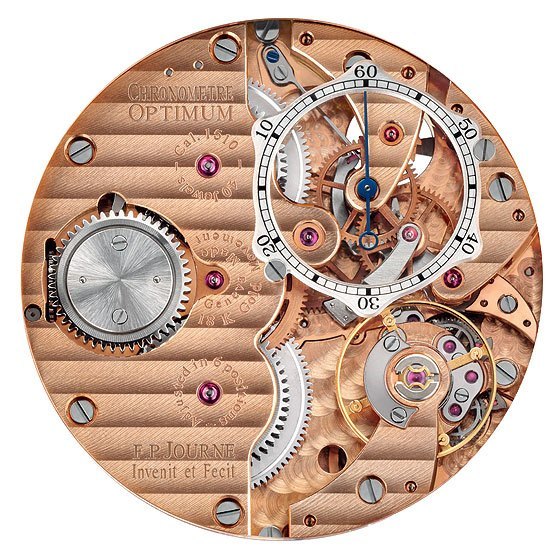
The issues at stake are plainly illustrated in the conception and making of the Chronomètre Optimum. (Note: there is a reason that it called the “optimum” – Journe is a man of few but highly selective words).
The Chronomètre Optimum symbolizes the very essence of precision for a wristwatch. It is probably the most complicated 3 hands (4 with the power reserve indicator) watch ever.
It addresses the 4 main issues of a mechanical watch:
1 – The linear delivery of power. Like in the Chronomètre Souverain (see “Power or Precision? An Insider’s look at FP Journe”) [hyper link], the Chronomètre Optimum has two barrels to insure the stability of the driving force.
2 – The regulating of power delivery. The CO is outfitted like the TN with a Remontoir d’Egalité (constant-force Remontoir). (Patent EP1528443.A1) (see “Who needs a Force Constante? An Insider’s look at FP Journe – part 2”) [hyper link]. Additionally, for the first time, the Remontoir is made of titanium for greater efficiency due to its lightness. As we have seen in the past few years, lots of watch companies are coming out with constant force devices. Be wary of their marketing claims. If the system to regulate the delivery of power is too heavy, it creates too much friction and thus makes it counterproductive. The heavier it is, the more power it needs to counteract the added friction, creating an unsolvable cycle. This is why FP’s is super light.
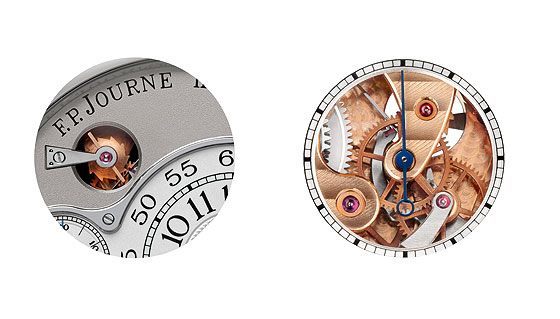
3 – The issue with lubricants. There are two main parts that need to be lubricated in a timepiece: the gear train and the regulating organs. At 21’600 v/h, the lubricants used for the regulating organs are going to deteriorate very quickly, therefore creating more friction leading to a loss of amplitude, thus losing in accuracy. So the problem becomes the deterioration of lubricants, not the use of them!
One way to deal with this issue is to avoid using lubricants altogether.
FP: “The use of silicium is the wrong answer to the right question”. Silicium offers virtually no friction and hence does not need lubricants. But silicium is extremely fragile, and would need to be replaced at each overhaul. FP: “My watchmaking philosophy is to make watches that will still work in 200 years. Those made 200 years ago are still in working order today if they have been maintained regularly. It is for this reason that I only use solid materials that have proven their worth rather than modern materials that will probably be unable to be repaired in a few decades.”
By patenting a brand new escapement system (EBHP High-Performance Bi-axial Escapement), FP was able to avoid the use of lubricants.
EBHP is the only direct impulse escapement to start up on its own. And not only does it function without lubricant, it also has a far greater output than the majority of escapements: 50 hours without loss of amplitude. Many dual-wheel escapements have been created in the past, the most efficient being A-L Breguet’s “natural” escapement.
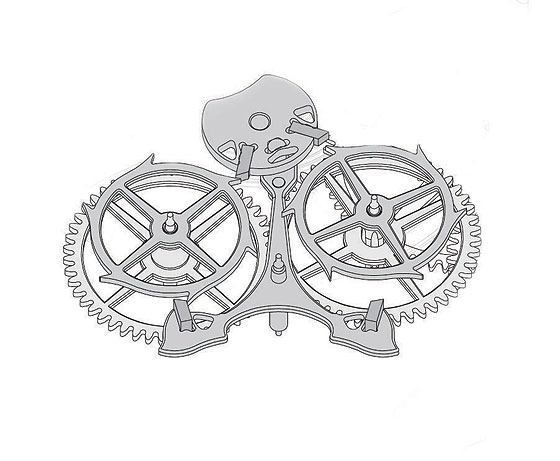
4 – The “heartbeat” of a movement. The CO is fitted with a spiral with Phillips curve insuring better equilibrium.
The 2 different second hands show the 2 different outputs of the mechanism. One from the Escapement and the other from the Remontoir d’Egalité.
Variations in some of the watches from the Souveraine collection:
– The Chronomètre à Résonance achieves a constant rate when it is exposed to the movement of the wrist. This watch is very accurate because its rate is not affected when the watch is worn.
– The Tourbillon Souverain: the classic tourbillon is not generally a very good watch in terms of accuracy, but combined with a constant force remontoire, its stability is guaranteed.
– The Chronomètre Souverain: has the same accuracy as the Chronomètre à Résonance but does not cancel out the effects of a moving wrist.
With these 4 issues addressed, FP was able to test the watch in two ways. The obvious test was to add lubricants to the Bi-axial escapement to see if the watch would function better. It did not. The second was to test the amplitude which remains has a far greater output than the majority of escapements: 50 hours!
Far from FP to claim that he has found the Holy Grail. But the quest for it is a reward in itself. If one day, you happen to visit the F.P. Journe Manufacture and ask to see where FP works, you will be taken to his workbench.
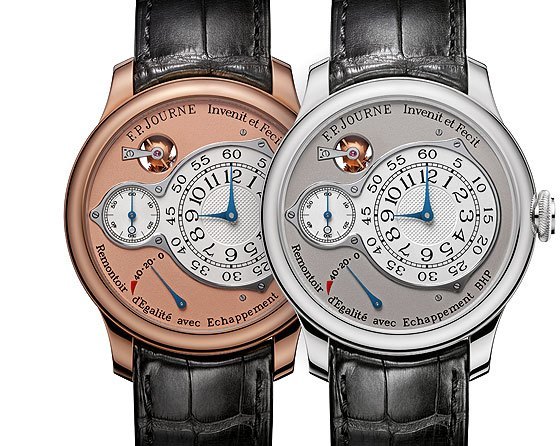
Read also our previous talks:
Power or Precision” An Insider’s look at F.P. Journe-Part 1
Who needs Constant Force? An Insider’s look at F.P. Journe-Part 2 [hyper link]
Is your wristwatch a WRIST watch? An Insider’s look at F.P.Journe – Part 3 [hyper link]
For more information, www.fpjourne.com
Or visit or contact one of our F.P. Journe Boutiques:
Bal Harbour shops Mall at +1 305 993 4747; [email protected].
Los Angeles: +1 310 294 8585; [email protected]
New York: +1 212 644 5918; [email protected]




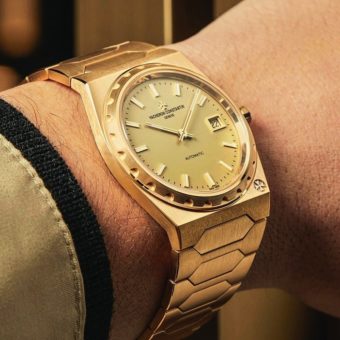
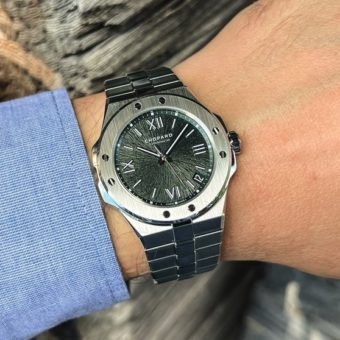

All very interesting, but I’m waiting for proof. There are many inventions that improved accuracy in theory but in practice turned out to be no better than a well constructed, well-adjusted standard design. Journe should submit a representative sample of these watches to competitive, independent tests and let’s see how it stacks up.